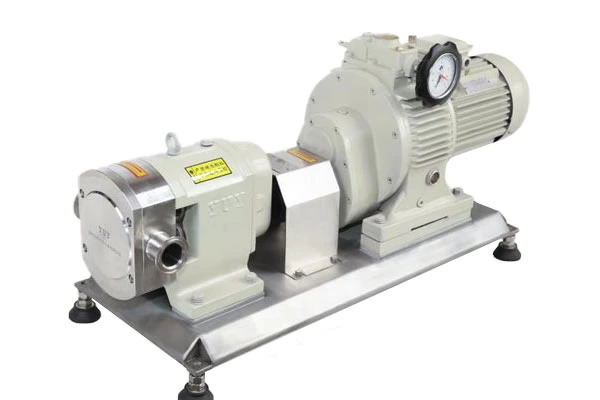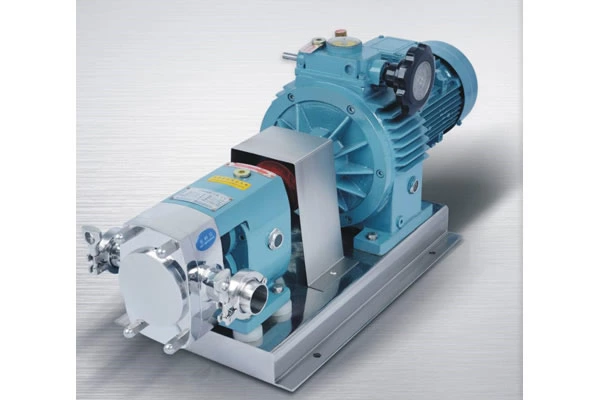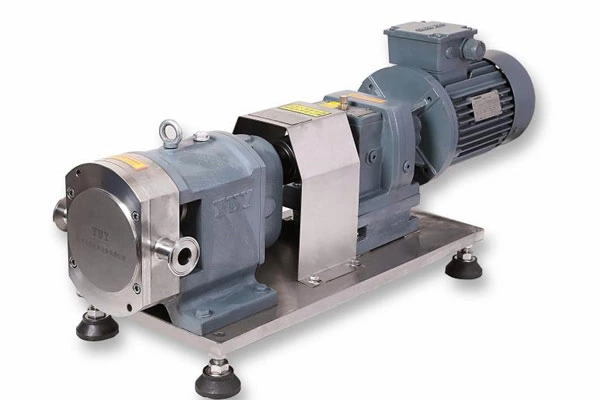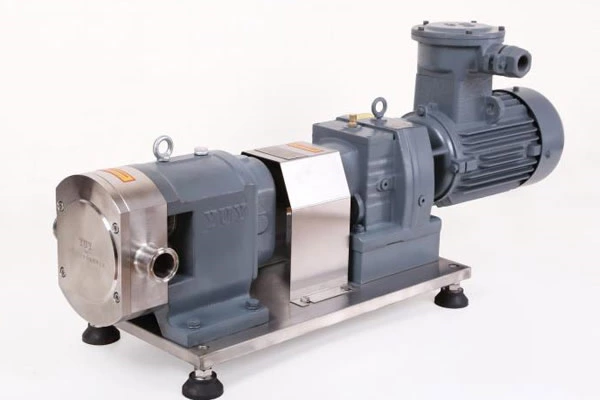Application Of Sanitary Rotary Vane Pumps In Irrigation And Aeration
Sanitary Rotary Lobe Pump is widely used in sewage discharge of municipal engineering, factories, commerce, hospitals, hotels, residential areas, etc. due to its advantages such as simple installation, small footprint, inconvenient maintenance and no noise. At present, most of the sanitary rotary vane pumps sold on the market are vertically arranged, and the pump is coaxial with the motor, so that the weight of the rotating parts is in the same direction as the water pressure suffered by the impeller; secondly, the submersible sewage pump is used underwater, and the sewage medium conveyed contains impurities, sludge and other materials; thirdly, the submersible sewage pump is a kind of centrifugal pump. During its operation, the power always increases with the increase of flow. When the flow exceeds the design flow and reaches a certain value, the motor will be destroyed due to overload. The reliability of sanitary rotary vane pumps needs to be enhanced, so improving the technical content of its products is an important direction for manufacturers to develop in the future.
At present, sanitary rotary vane pumps in China are mainly produced and manufactured by domestic manufacturers, and a small part of the products are exported from abroad. Improving the technical content of products and strengthening the market competitiveness of products can drive the development of the industry. Judging from the current situation, the market prospects of sanitary rotary vane pumps in my country are very broad. However, everything is divided into two parts. The most critical issue for sanitary rotary vane pumps is reliability, because the sanitary rotary vane pump is used under liquid; the medium conveyed is a mixed liquid containing solid materials; the pump is very close to the motor; the pump is arranged vertically, and the weight of the rotating parts is in the same direction as the water pressure on the impeller. These problems make the requirements of sanitary rotary vane pumps in terms of sealing, motor load capacity, bearing arrangement and selection higher than those of ordinary sewage pumps.
For sanitary rotary vane pumps, people often use them in agricultural production and aquaculture. However, in agricultural production, sanitary rotary vane pumps are generally used for irrigation and drainage; while in aquaculture, sanitary rotary vane pumps are more used for the purpose of surface oxygenation. As we all know, aerators are frequently used in aquaculture, but compared with sanitary rotary vane pumps, they can not only achieve the purpose of oxygenation, but also solve the problem that aerators cannot exist underwater and the oxygenation effect cannot reach deep water. It can be seen that sanitary rotary vane pumps can overcome the defects of low utilization rate of existing aquaculture aeration equipment and inability to achieve deep water aeration.
On the main body of the sanitary rotary vane pump, a U-shaped shield with openings at both ends is set on the outer periphery of the water inlet, and a number of small through holes are set on the side of the U-shaped shield close to the submersible pump body, and a floating ball is fixedly connected to the upper part of the U-shaped shield. When we use the sanitary rotary vane pump, we put the submersible pump body together with the U-shaped protective cover into the water. Due to the effect of the float, the openings at both ends of the protective cover are located above the water surface. After the sanitary rotary vane pump body is running, water flows continuously from the water inlet. The flow of water forms a negative pressure between the pump inlet and the U-shaped protective cover, and air enters from the small through holes on the U-shaped protective cover to form small bubbles. In this way, the sanitary rotary vane pump not only achieves the irrigation and drainage function, but also plays an oxygenation role, which greatly improves the utilization rate of the sanitary rotary vane pump and reduces the cost of agricultural production and aquaculture.








